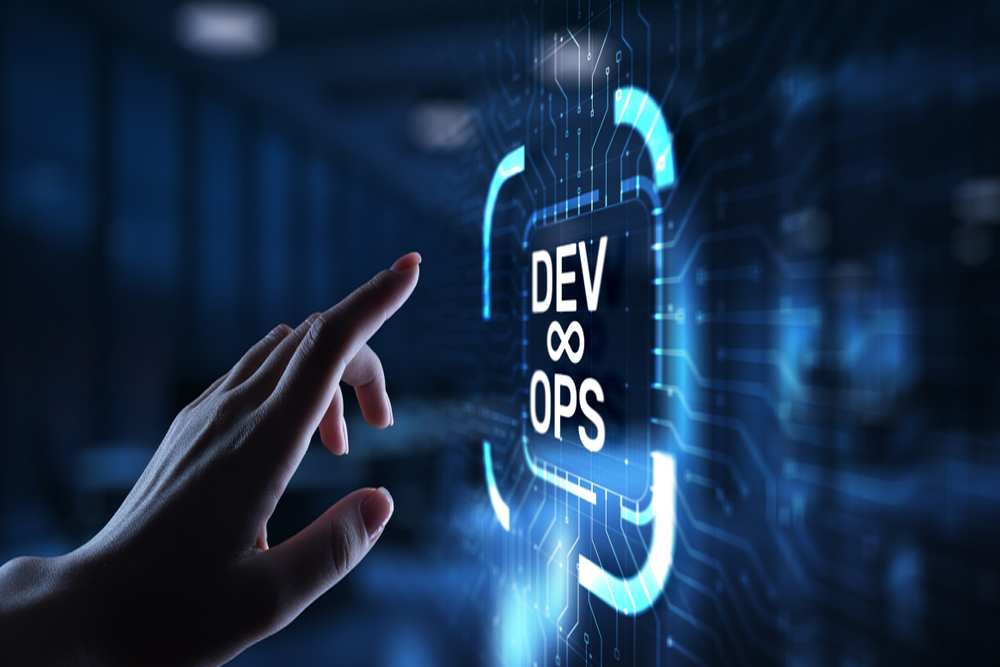As the cloud landscape evolves, numerous organizations are embracing multi-cloud or hybrid cloud methodologies to diversify their infrastructure and mitigate potential risks. Multi-cloud architectures permit businesses to leverage services from various cloud providers, facilitating performance optimization, minimizing vendor lock-in, and fulfilling specific regulatory obligations.
For instance, an IT organization might utilize AWS for its high-performance computational requirements while employing Google Cloud for sophisticated machine learning tasks. This approach ensures that the organization capitalizes on the distinct advantages of various providers for optimal results.
Simultaneously, a hybrid cloud strategy, where an organization integrates private cloud and public cloud solutions provides enhanced flexibility. Organizations can retain sensitive data on-premises while utilizing the cloud for less critical operations, ensuring both security and scalability. Solutions such as Azure Arc and AWS Outposts simplify the management of these hybrid environments by delivering consistent management frameworks across both public and private cloud infrastructures.
Cost-Effective Scaling Models (IaaS, PaaS, SaaS) Customized for Organizational Expansion
Cloud services function under multiple frameworks Infrastructure as a Service (IaaS), Platform as a Service (PaaS), and Software as a Service (SaaS) providing the adaptability to select the optimal solution for your organizational requirements.
- IaaS empowers organizations to oversee infrastructure through virtualized computing assets, offering a means to eliminate initial hardware expenditures. Enterprises are charged solely for their consumption, whether it pertains to storage, networking, or computational capabilities.
- PaaS introduces an additional layer of abstraction, supplying pre-configured platforms for the development and deployment of applications without the need to manage foundational infrastructure.
- SaaS, conversely, represents the most fully managed alternative, wherein organizations utilize software via a subscription framework, thereby diminishing the necessity for internal infrastructure supervision.
Selecting the appropriate mix of these models enables firms to enhance both cost efficiency and performance. For instance, integrating IaaS for infrastructure oversight with PaaS for application creation can accelerate time-to-market while preserving control over the foundational architecture.
Security Enhancements With Modern Cloud Solutions
A primary advantage of modern cloud architecture is the implementation of Zero Trust Architecture (ZTA), a framework that posits that no actor, system, or service regardless of its position relative to the network should be inherently trusted. Within a Zero Trust framework, continuous authentication, authorization, and validation of every user and device are mandatory. To manage critical business systems, this methodology significantly minimizes the attack surface.
In addition, cloud service providers deliver comprehensive encryption both for data at rest and during transmission ensuring that your data remains safeguarded against unauthorized access. Solutions such as AWS Key Management Service (KMS) and Azure Key Vault facilitate encryption management, empowering enterprises to securely store and manage access to sensitive information without incurring additional complexity.
In addition to encryption, advanced cloud infrastructure incorporates real-time threat detection via services such as AWS GuardDuty, Azure Security Center, and Google Cloud’s Security Command Center. These solutions leverage machine learning algorithms to identify anomalies, malicious behavior, and possible vulnerabilities, enabling proactive threat management. This level of integrated security instills confidence in businesses that their data and operations are safeguarded around the clock.
Integrating Security Early Into The Development Cycle (DevSecOps Approach)
Security within modern cloud ecosystems is not a secondary consideration—it is embedded directly into the development process through the DevSecOps methodology. This approach guarantees that security measures are enforced at every phase of development, spanning from code integration to testing and deployment. By utilizing tools such as Snyk for vulnerability scanning, Checkmarx for static code analysis, and Aqua Security for container protection, IT teams can pinpoint and remediate security vulnerabilities early in the development timeline.
DevSecOps methodologies are critical in today’s dynamic, agile settings where rapid deployments are commonplace. Automation tools integrated within CI/CD pipelines ensure that security assessments are conducted consistently without hindering release schedules, enabling IT organizations to preserve both agility and security.
How DevOps Enhances Software Delivery Through CI/CD Pipelines
A meticulously executed CI/CD pipeline ensures that code is seamlessly integrated, validated, and released without human involvement. This methodology not only minimizes errors but also considerably accelerates the development lifecycle.
- Jenkins recognized as one of the leading CI/CD utilities, is acclaimed for its adaptability and the capacity to integrate with numerous plugins, rendering it a preferred choice for various DevOps teams.
- Azure DevOps provides a comprehensive DevOps toolchain for software development and deployment, facilitating flawless integration with Microsoft Azure services.
- AWS DevOps connects with tools like AWS CodeDeploy, AWS CodeBuild, and AWS CodePipeline, empowering teams to automate the entire delivery workflow utilizing AWS resources.
By automating the deployment pipeline, teams can concentrate more on innovation and less on manual procedures, ensuring that they can adapt to market requirements with responsiveness.
Key DevOps Tools
- Docker transformed the approach to software packaging and deployment by enabling developers to construct, share, and execute applications within isolated containers. Containers ensure that applications operate uniformly, irrespective of the environment, mitigating the “it works on my machine” dilemma.
- Kubernetes enhances the management of container orchestration, streamlining the deployment, scaling, and oversight of applications packaged in containers. Its self-healing features, load balancing, and scaling functionalities make it essential for overseeing extensive containerized workloads.
- Terraform facilitates Infrastructure as Code (IaC), empowering teams to govern infrastructure via version-controlled code. This guarantees that infrastructure modifications are traceable, repeatable, and auditable, which is vital for compliance and governance in large-scale enterprises. Ansible streamlines configuration management, application deployment, and task automation, providing an efficient method to manage intricate IT ecosystems.

Bluella's Continuous Monitoring & Feedback Loops In Improving Infrastructure Health
Ongoing surveillance is essential for sustaining the integrity of both applications and infrastructure. Our modern monitoring solutions such as Prometheus, Datadog, and Grafana deliver real-time performance analytics, enabling the identification of potential discrepancies prior to affecting end-users.
An effective feedback loop is imperative for enhancing the overall health of infrastructure and applications. By persistently tracking performance indicators, system logs, and security threats, our team swiftly responds to emerging issues. Monitoring tools that interface with Slack or Microsoft Teams ensure that alerts are relayed promptly to pertinent team members, facilitating rapid resolutions.
How Automated Testing and Deployment Pipelines Reduce Manual Intervention and Errors
A significant advantage of DevOps is the automation of both testing and deployment workflows. Solutions like GitLab CI/CD, CircleCI, and Jenkins can automate the complete lifecycle, from code commit to testing, culminating in deployment.
Automated testing makes sure that every code modification is assessed in real time, thereby diminishing the probability of bugs entering production. Automated deployment pipelines, such as those offered by Azure DevOps or AWS CodePipeline, facilitate swift and error-free implementations, ensuring that new functionalities are introduced without compromising the user experience.
Automation not only reduces human error but also enables adherence to stringent deadlines without compromising quality. This aspect is particularly vital in the current landscape, where customers expect ongoing innovation and regular updates.
Reducing Infrastructure Management Overhead
Serverless computing eliminates the necessity of server management, leading to considerable reductions in both time and operational costs. In a DevOps context, serverless frameworks are in perfect harmony with the principle of complete automation. By executing functions in response to designated triggers (such as API calls or modifications in databases), Bluella constructs highly scalable applications without the need to manage the foundational infrastructure.
For example, by leveraging AWS Lambda, developers can activate serverless functions to handle incoming data, execute backend tasks, or connect with external APIs, all while avoiding concerns related to infrastructure scaling or availability. This consumption-based pricing model guarantees that organizations incur costs solely for the compute resources utilized, which is especially beneficial for applications experiencing erratic traffic fluctuations.
Minimized Latency For Mission-Critical Applications
While serverless frameworks efficiently manage backend tasks, edge computing fulfills the requirement for immediate data processing at the network's periphery, closer to the data generation point. For mission-critical applications that demand ultra-low latency such as IoT implementations, autonomous vehicles, or instantaneous analytics; edge computing is essential.
By processing data in proximity to its origin, edge computing diminishes the necessity of transmitting information back to centralized cloud servers, thereby reducing latency and bandwidth expenses. This has significant ramifications for applications where response times are crucial. Platforms like Azure IoT Edge, AWS Greengrass, and Google Cloud IoT Edge empower developers to deploy and operate functions at the edge, optimizing application performance in sectors such as healthcare, logistics, and finance.
Automating Infrastructure Deployment and Management
IaC relies on tools such as Terraform, Pulumi, and AWS CloudFormation as foundational elements. For instance, with Terraform, users can articulate their entire infrastructure in code and deploy it across various cloud environments, including AWS, Azure, and Google Cloud. This multi-cloud capability gives uniformity in infrastructure management while offering version control and traceable change logs for all configurations.
Conversely, Pulumi allows developers to write infrastructure code in general-purpose programming languages like Python, JavaScript, and Go, effectively bridging the gap between development and operations teams. This fosters collaboration and mitigates the learning curve for developers who may lack familiarity with dedicated infrastructure languages.
AWS CloudFormation proves to be particularly advantageous for organizations deeply embedded in the AWS ecosystem. By specifying infrastructure in templates, teams can replicate intricate environments with minimal effort, ensuring uniformity and minimizing the likelihood of human error.
Avoiding Configuration Drift in Multi-Cloud Environments
A significant obstacle in managing IaC across multi-cloud environments is configuration drift, which occurs when the actual state of the infrastructure diverges from the desired state specified in the code. To mitigate this issue, Bluella automates not only the provisioning of infrastructure but also the oversight and reconciliation of any modifications.
Utilizing tools like Terraform Cloud or Pulumi’s CrossGuard can assist in managing and enforcing policies across diverse cloud platforms, ensuring that infrastructure remains aligned with specified configurations. Furthermore, integrating IaC with GitOps methodologies where infrastructure modifications are version-controlled in Git repositories, guarantees that all updates are transparent, traceable, and easily reversible.
Strategies For Integrating Legacy Systems With Modern Cloud Infrastructure Through APIs and Middleware Solutions
Merging legacy systems with contemporary cloud infrastructure presents a significant challenge, particularly in sectors with substantial investments in traditional on-premise solutions. The transition to cloud-native environments doesn't happen overnight. A hybrid approach that utilizes APIs and middleware solutions can assist organizations in modernizing their infrastructure while ensuring operational continuity.

When engaging with legacy systems, direct integration with modern cloud infrastructure can prove to be a daunting task. This is where APIs become essential, they serve as a bridge, allowing seamless data exchange between outdated software and cloud-native applications. Utilizing middleware solutions like MuleSoft, Tibco, or WSO2, we assist organizations in establishing this connective framework, which promotes communication between legacy systems and cloud platforms. This not only prolongs the life of your existing infrastructure but also facilitates incremental modernization of its components.
A widely adopted technique involves employing API gateways to manage the integration between legacy and cloud systems. These gateways, particularly when paired with middleware, ensure secure, scalable, and manageable communication pathways between on-premises systems and cloud applications. As organizations embrace DevOps principles throughout this transition, API integration ensures that legacy systems can coexist with modern CI/CD pipelines, thereby enhancing operational agility without jeopardizing critical business functions.
Balancing The Transition To Cloud-Native Applications While Managing Existing IT Investments
The shift to cloud-native applications necessitates a careful equilibrium between modernizing infrastructure and preserving the value of existing IT investments. While modern cloud solutions provide scalability, flexibility, and cost-effectiveness, completely overhauling legacy systems in a single move is seldom a viable option.
We assist organizations in implementing a gradual cloud adoption strategy, ensuring that legacy systems remain operational while cloud-native services are rolled out in phases. This methodology enables entities to mitigate the risk of downtime and avert financial pressures, all while progressively enhancing your IT architecture. Adopting containerization methods such as Docker and Kubernetes facilitates the progressive enhancement of legacy applications. This approach encapsulates older services within containers, rendering them portable and simplifying integration with modern DevOps workflows.
Furthermore, tools such as Azure DevOps and AWS DevOps furnish the essential integration capabilities to oversee both on-premises and cloud applications. Hybrid cloud configurations present an optimal scenario wherein your organizations can persist in utilizing legacy systems while embracing cloud-native applications for new initiatives. Bluella ensures that this transition is executed seamlessly, maintaining an appropriate balance between preserving existing systems and advancing cloud modernization.
Harnessing AI For Predictive Analytics In DevOps
As DevOps progresses, the incorporation of AI-driven predictive analytics into operational frameworks can significantly enhance infrastructure management. By utilizing AI-empowered solutions, you can preemptively resolve infrastructure challenges prior to their effect on performance, thereby optimizing scalability and minimizing downtime.
AI-enhanced tools such as Datadog, New Relic, and AWS CloudWatch now feature machine learning functionalities that can identify anomalies instantaneously, forecast future performance complications, and automate incident responses. These platforms deliver comprehensive insights into your cloud infrastructure, enabling your team to refine operations and execute data-centric decisions. By embedding these platforms into your DevOps processes, you can oversee your infrastructure, recognize potential failures, and initiate automated fixes, substantially diminishing manual efforts and reducing the likelihood of human error.
Machine Learning Operations (MLOps): Scaling AI With DevOps
For organizations aiming to enhance AI capabilities, the integration of MLOps into your DevOps pipelines is crucial. MLOps merges machine learning with DevOps methodologies, optimizing the deployment, surveillance, and governance of AI models in operational environments. As enterprises increasingly depend on AI for fostering innovation, the administration of the machine learning model lifecycle at scale transforms into a vital responsibility.
We assist organizations in embedding MLOps frameworks such as Kubeflow into their cloud infrastructure to oversee the complete machine learning lifecycle, spanning from data preparation to model deployment and monitoring. Kubeflow, for instance, operates on Kubernetes, allowing your teams to automate the deployment of ML models in a manner analogous to traditional applications within a DevOps context. Consequently, your data scientists and developers can cooperate more efficiently, ensuring that models are seamlessly integrated into production systems and perpetually optimized over time.
Furthermore, AI model management solutions can be incorporated into your CI/CD pipelines, augmenting your DevOps methodologies by guaranteeing that your machine learning models are refreshed, monitored, and scaled as required. This enables your teams to automate a significant portion of the repetitive tasks involved in managing AI models, such as retraining models with new data or scaling infrastructure to accommodate rising demands.
Confused about enhancing your infrastructure and streamlining your DevOps processes? With expertise in cloud integration, multi-cloud management, and AI-driven solutions, Bluella is here to help you modernize without disruption.
Let us handle the complexities while you focus on driving innovation and growth. Reach out today , and let’s take your operations to the next level!



